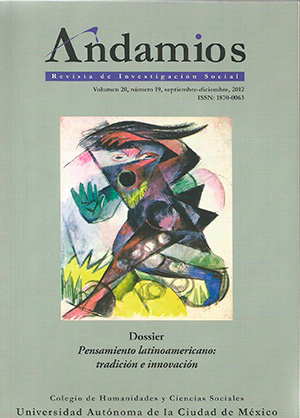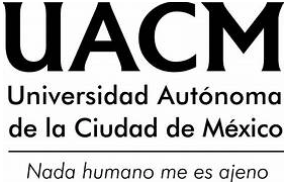The taxonomy of change: approaches and typologies in determining policy change
DOI:
https://doi.org/10.29092/uacm.v9i20.382Keywords:
Public policy, policy theory, policy change, policy analysis, theoryAbstract
This essay seeks to visit policy process and policy change literature, in order to identify theoretical tendencies through several typology proposals of policy change based both old and current orthodoxies, and used in determining what is policy change, and linked, how change occurs.
Downloads
References
Aguilar Villanueva, L. F. (ed.) (1996), El estudio de las Políticas Públicas (2a. ed.), México: Miguel Angel Porrúa.
Allison, G. T. (1968), Conceptual models and the Cuban missile crisis: national policy, organization process, and bureaucratic politics, Santa Monica, California: Rand Corp.
Baumgartner, F. R., y Jones, B. D. (1993), Agendas and Instability in American Politics, Chigago: University of Chicago Press.
Burstein, P. (1991), “Policy Domains: Organization, Culture and Policy Outcomes”, en Annual Review of Sociology (17), pp. 327-350.
Cairney, P. (2007), “How does The Political Science Literature Conceptualise change? A Multiple Lenses Approach”, en Governing by Looking Back Conference, Australian: National University.
Cairney, P. (2009a), “Multiple Theories and Multiple Narratives in Public Policy: Are They Complementary or Contradictory?”, en APSA American Political Science Association Conference, Toronto: 25-11 Agenda Setting and Policy Change In New Contexts.
Cairney, P. (2009b), “Using Multiple Lenses and Multiple Narratives to Explain Developments in Public Administration”, en Policy Studies Association PSA Conference, Manchester: Departament of Politics and International Relations, University of Aberdeen.
Capano, G. (2009a), “Political Change and Policy Change: some notes
on the rule of leadership as a theoretical and empirical problem”,
en I. P. S. Association (ed.), XXI IPSA World Congress of Political
Science, Santiago de Chile: IPSA.
Capano, G. (2009b), “Understanding Policy Change as an Epistemological and Theoretical Problem”, en Journal of Comparative Policy Analysis, 11(1), pp. 263-282.
Cohen, M. D., March, J. G., y Olsen, J. P. (1972), “A Gabage Can Model of Organizational Choice”, en Administrative Science Quarterly, 17, pp. 1-25.
DeLeon, P. (1999), “The Stages Approach to the Policy Process: What has it Done? Where Is It Going?”, en P. A. Sabatier (ed.), Theories of the policy process, Boulder, Colo: Westview Press. pp. 19-33.
Goodin, R., y Waldner, I. (1996), “Pensar en grande, pensar en pequeño y simplemente no pensar”, en L. F. Aguilar Villanueva (ed.), La hechura de las políticas (2a. ed.), México: Miguel Angel Porrúa, pp. 283-314.
Hall, P. A. (1993), “Policy Paradigms, Social Learning and The State: The Case of Economic Policymaking in Britain”, en Comparative Politics, 25(3), pp. 275-296.
Hayes, M. T. (2001), The limits of policy change : incrementalism, worldview, and the rule of law, Washington DC: Georgetown University Press.
Hogwood, B. D., y Peters, B. G. (1982), “The Dynamics of Policy Change: Policy Succession”, en Policy Sciences, 14(3), pp. 225-245.
Hogwood, B. W., y Peters, B. G. (1983), Policy dynamics, Brighton, Sussex: Wheatsheaf Books.
Hogwood, B. W., y Peters, B. G. (1985), The pathology of public policy, Oxford: Clarendon Press; Oxford University Press.
Howlett, M., y Cashore, B. (2007), “Re-Visiting the New Orthodoxy of Policy Dynamics: The Dependent Variable and Re-Aggregation Problems in the Study of Policy Change”, en Canadian Political Science Review, 1(2), pp. 50-62.
Howlett, M., y Cashore, B. (2009), “The Dependent Variable Problem in the Study of Policy Change: Understanding Policy Change as a Methodological Problem”, en Journal of Comparative Policy Analysis, 11(1), pp. 33-46.
Ingram, H. M., y Smith, S. R. (1993), Public policy for democracy, Washington, D.C.: Brookings Institution.
Jenkins-Smith, H. C., y Sabatier, P. A. (1994), “Evaluating the Advocacy Coalition Framework”, en Journal of Public Policy, 2(14), pp. 175-203.
Jochim, A. E., y May, P. J. (2009), Beyond Subsystems: Policy Regimes and Governance, Washington, D.C.: Paper presented at the 5TAD Fifth Transatlantic Dialogue Conference.
John, P. (1998), Analysing Public Policy, Londres-Nueva York: CONTINUUM.
John, P. (2003), “Is There Life After Policy Streams, Advocacy Coalitions, and Punctuations: Using Evolutionary Theory to Explain Policy Change?”, en Policy Studies Journal, 31(4), pp. 481-678.
Jones, B. D., y Baumgartner, F. R. (2005), The Politics of Attention: How Government Prioritizes Problems, Chicago: The University of Chicago Press.
Lindblom, C. E. (1965), The intelligence of democracy; decision making through mutual adjustment, Nueva York: Free Press.
Lindblom, C. E. (1968), The policy-making process, Englewood Cliffs: Prentice-Hall.
Mcbeth, M. K., Shahanan, E. A., Arnell, R. J. y Hathaway, P. L. (2007), “The Intersection of Narrative Policy Analysis and Policy Change Theory”, en The Policy Studies Journal, 35(1), pp. 87-108.
Nakamura, R. T. (1987), “The Textbook Policy Process and Implementation Research”, en Policy Studies Review, 7(2), pp. 142-154.
Ostrom, E. (2007), “Institutional Rational Choice: An Assessment of the Institutional Analysis and Development Framework”, en Theories of the policy process (2nd Edition ed.) Boulder: Westview Press, pp. 35-72.
Peters, B. G., y Hogwood, B. W. (1980), Policy succession : the dynamics of policy change, Glasgow: Centre for the Study of Public Policy University of Strathclyde.
Real-Dato, J. (2009a), “Mechanisms of Policy Change: A Proposal for a Synthetic Explanatory Framework”, en Journal of Comparative Policy Analysis, 11(1), pp. 117-143.
Real-Dato, J. (2009b), “Mechanisms of Policy Stability and Change: epistemological and theoretical implications of the application ef the Institutional Analysis and Development Framework to the analysis and explanation of policy dynamics”, en I.P.S. Association (ed.), IPSA 21st. World Congress of Political Science, Santiago de Chile.
Roth-Deubel, A. N. (2007), “Análisis de políticas públicas: de la pertinencia de una perspectiva basada en el anarquismo espistemológico”, en Revista Ciencia Política. Universidad Nacional de Colombia(3), pp. 39-64.
Sabatier, P. A. (1988), “An Advocacy coalition framework of Policy Change and the Role of Policy-Oriented Learning Therein”, en Policy Sciences(21), pp. 129-168.
Sabatier, P. A. (1991), “Toward better theories of the policy process”, en Ps, 24(2), pp. 144-156.
Sabatier, P. A. (1999), Theories of the policy process, Boulder: Westview Press.
Sabatier, P. A. (2007a), “Fostering the Development of Policy Theory”, en P. A. Sabatier (ed.), Theories of the policy process (2nd. ed.), Boulder: Westview Press, pp. 321-335.
Sabatier, P. A. (2007b), “The Need for Better Theories”, en Theories of the policy process (2nd. edition ed.), Boulder: Westview Press, pp. 3-17
Sabatier, P. A. (2007c), Theories of the policy process (2nd. ed.), Boulder: Westview Press.
Sabatier, P. A., y Jenkins-Smith, H. C. (1993), Policy change and learning : an advocacy coalition approach, Boulder: Westview Press.
Schlager, E. (2007), “A Comparison of Frameworks, Theories and Models of policy processes”, en P. A. Sabatier (ed.), Theories of the policy process (2nd. ed.), Boulder: Westview Press, pp. 293-319.
Simon, H. A. (1982), Models of bounded rationality, Cambridge: MIT Press.
Stewart, J. (2006), “Value Conflict and Policy Change”, en The Review ofPolicy Research, 23(1), pp. 183-195.
Published
Issue
Section
License
This Journal is licensed under Creative Commons Mexico 2.5. It is allowed to reproduce and disseminate the contents of the Journal for educational or research purposes, not for profit, as long as they are not mutilated and cite the source (Andamios, Revista de Investigación Social) and the author.
The copyright of the articles published in Andamios, Revista de Investigación Social are transferred by the author(s) to Universidad Autónoma de la Ciudad de México when the originals have been accepted, so that they are published and distributed both in the printed and electronic versions of the Journal. However, as established by law, the author(s) retains their moral rights. The author(s) will receive a form of assignment of copyright that they must to sign when their original has been accepted. In the case of collective articles, the signature of one of the authors will suffice, provided that the latter has obtained the consent of the others.
Authors may use the material of their article in other works or books published by themselves, with the condition of quoting Andamios as the original source of the texts.
The articles contained in this publication are the responsibility of their authors and do not compromise the official position of Andamios, Revista de Investigación Social of the Universidad Autónoma de la Ciudad de México.





